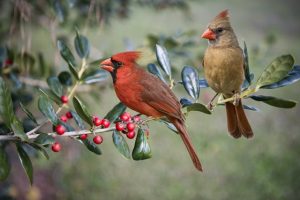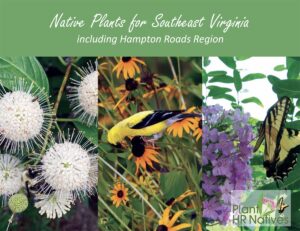 Fall is just around the corner. Before you know it, we’ll be swapping our tank tops for cozy flannel button ups! Have you considered swapping your traditional grassy lawn for a mix of native plants? Maybe you should. The fall season also ushers in the ideal time to rethink your outdoor lawn and garden spaces. Native plants boost wildlife populations and are a low maintenance alternative to turf grass. There’s no mowing, reseeding, or fertilizing required when you plant Virginia native plants. That’s why this fall we’re encouraging Hampton Roads to give “rewilding” a try.
Fall is just around the corner. Before you know it, we’ll be swapping our tank tops for cozy flannel button ups! Have you considered swapping your traditional grassy lawn for a mix of native plants? Maybe you should. The fall season also ushers in the ideal time to rethink your outdoor lawn and garden spaces. Native plants boost wildlife populations and are a low maintenance alternative to turf grass. There’s no mowing, reseeding, or fertilizing required when you plant Virginia native plants. That’s why this fall we’re encouraging Hampton Roads to give “rewilding” a try.
Plant Virginia Natives, a collaborative initiative created to increase the local availability and use of native plants statewide, offers tips for creating a landscape in which nature takes care of itself.
- First, control or remove invasive species that are known to be problematic to the environment, such as English ivy, Japanese honeysuckle, periwinkle, privet, nandina and barberry.
- Next, look at your landscape to see what changes you would like to make. Consider planting native species of trees, shrubs, perennials, and groundcovers suitable to your yard’s growing conditions. Choose these in varying heights and layers to ensure adequate coverage and diversity throughout your space. An overhead canopy of trees, for instance, provides wildlife with a food source, nesting cover and shelter from the elements.
- Include plants for the pollinators, such as hummingbirds, bees, beetles, butterflies, and flies that carry pollen from one plant to another.
- For those who live on the water, create a wide plant buffer at the water’s edge to intercept sediments and filter out nutrients that run off the land.
- If you do wish to retain some lawn space, keep it to a minimum.
- Finally, leave the leaves! Setting aside areas in your landscape for leaf beds and using leaves as mulch provides an essential habitat for critters. In our area, this includes salamanders, box turtles, birds and other wildlife.
 Making any of these changes will help to transform your yard into a healthy ‘rewilded’ environment, but don’t feel like you have to do everything at once. Working on your yard over time will allow you to view your landscape throughout the seasons. It can be fun to wait and see what nature has in store!
Making any of these changes will help to transform your yard into a healthy ‘rewilded’ environment, but don’t feel like you have to do everything at once. Working on your yard over time will allow you to view your landscape throughout the seasons. It can be fun to wait and see what nature has in store!
Plant Virginia Natives publishes native plant guides for all Virginia regions. Download the Native Plants for Southeast Virginia guide at this link.